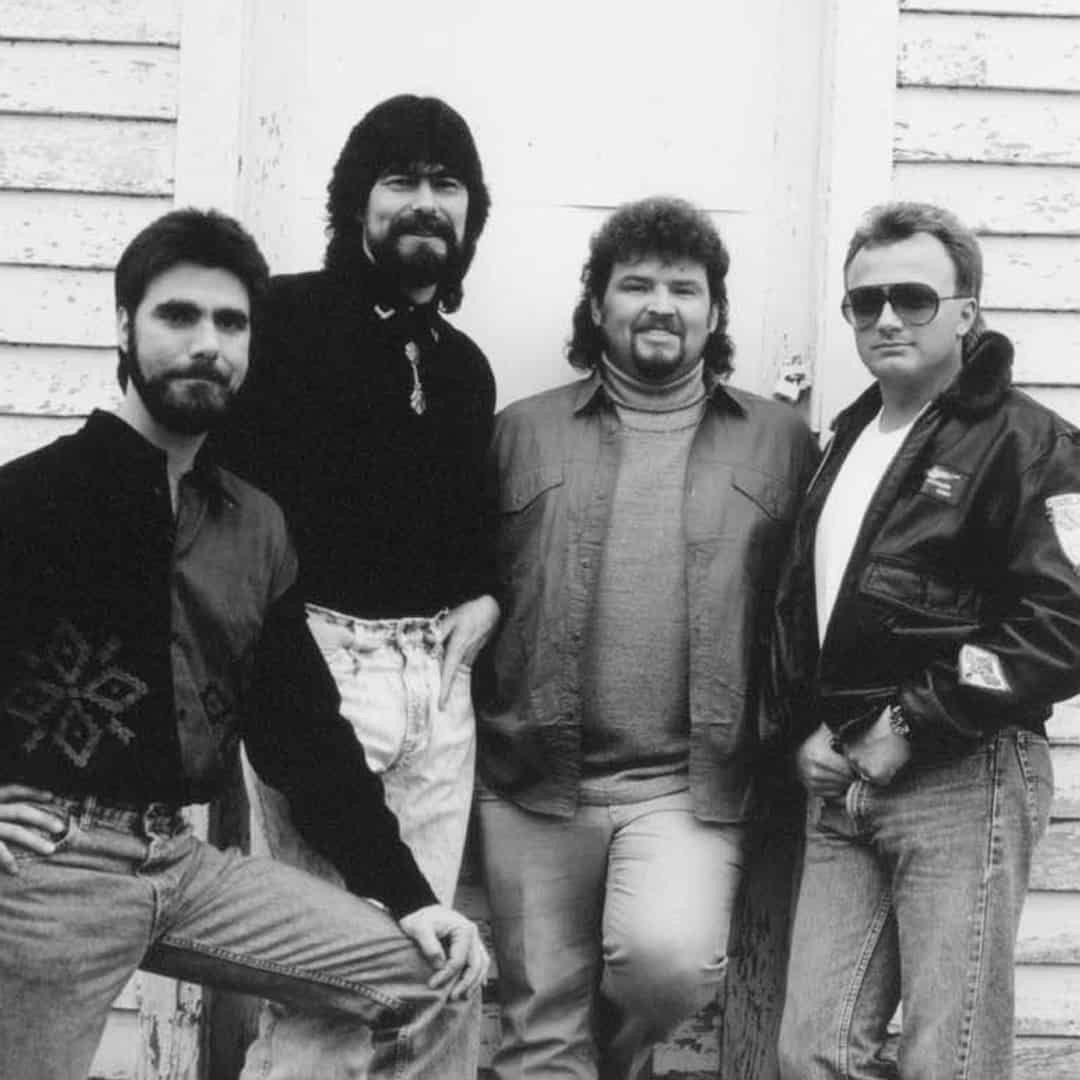Jerry
Bradley

-
Inducted2019
-
Born
January 30, 1940
-
Died
July 17, 2023
-
Birthplace
Nashville, TN
Jerry Bradley (1940 – 2023)
“Jerry Bradley grew up in Nashville’s music business, and then he helped shape it. He learned from the best: his father, Owen Bradley, and his first RCA Records boss, Chet Atkins. Once Jerry took the reins at RCA, he innovated—wresting marketing budgets and album cover control from New York; expanding country’s reach to entice pop and rock fans; and nurturing dynamic artists like Alabama, Waylon Jennings, Ronnie Milsap, Dolly Parton and Charley Pride, enabling their Hall of Fame careers. The album compilation Wanted! The Outlaws epitomizes his genius: entirely conceived by Bradley, it supercharged Waylon, Willie, and the Outlaw movement and earned country’s first platinum sales certification. Thanks to Jerry, country music gained newfound respect and commercial clout.”
—Kyle Young, CEO
Country Music Hall of Fame and Museum

Jerry Bradley grew up in the Nashville music business, learning engineering and record production from his father. He quickly showed himself to be skilled in artist signings, marketing, and record company management.
The son of legendary Nashville music industry figure Owen Bradley and a nephew of Nashville A-Team guitarist Harold Bradley, Jerry Bradley was born in Nashville in 1940. He began his high school years at Montgomery Bell Academy but switched to Hillsboro High after a disagreement with Montgomery Bell’s administration over who should run the school. After graduation he served two years in the army, where lines of authority were not up for debate.
Learning the Music Business
In the 1960s, Bradley began working with his family’s music publishing company, Forrest Hills Music. He learned to engineer and produce records while assisting his father at Bradley’s Barn studio in nearby Wilson County. Jerry vividly recalls the day that his father oversaw the mixing of a recording and asked him what he thought about a particular mix: “I thought, ‘I’ve arrived!’ The great Owen Bradley wants to know what I think!’”
The younger Bradley welcomed the chance to learn from the best. He observed and sometimes contributed to sessions with artists such as Joan Baez, Brenda Lee, Gordon Lightfoot, Loretta Lynn, Warner Mack, Webb Pierce, and Dinah Shore. The Bradley’s Barn schedule was often so hectic that Jerry worked well past midnight, then slept on a couch before starting another session at 9 a.m.
Bradley enriched his recording experience by working with guitarist Chet Atkins, Nashville head of RCA Records and a producer whose reputation rivaled Owen Bradley’s. Wanting to make his own mark in the music industry, Jerry Bradley told his father that he might be able to land a job with RCA. “You already have a job,” Owen Bradley said. “If you aim for another position, make sure it’s an opportunity to advance.”
Videos
“Hitmakers Workshop”
“Interview”
Image Gallery
-
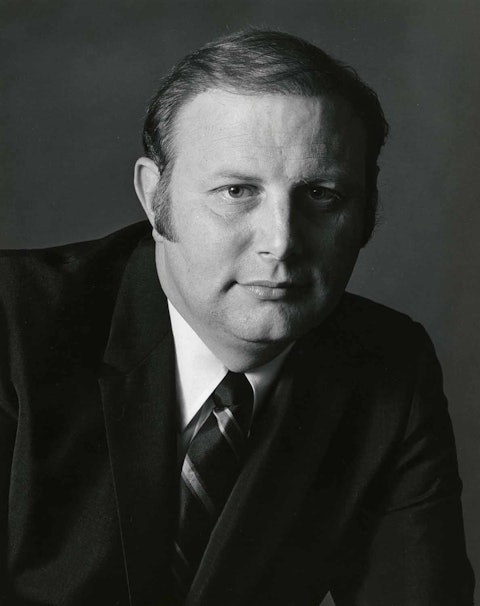
Jerry Bradley portrait.
-
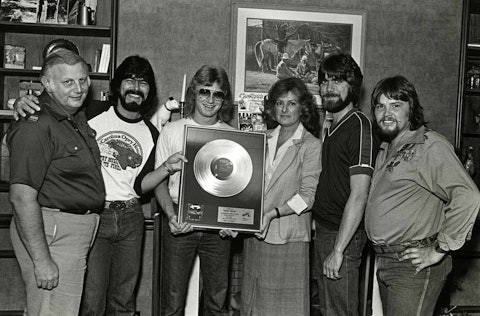
Jerry Bradley (far left) and BMI’s Frances Preston present Alabama (from left: Randy Owen, Mark Herndon, Teddy Gentry, and Jeff Cook) with a gold record award signifying sales of 500,000 copies of their album Feels So Right, June 1981.
-
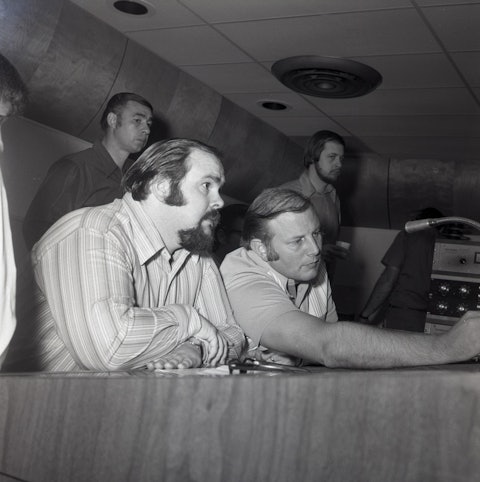
From left, foreground: singer Johnny Russell and Jerry Bradley in the control room of RCA Studio B.
-
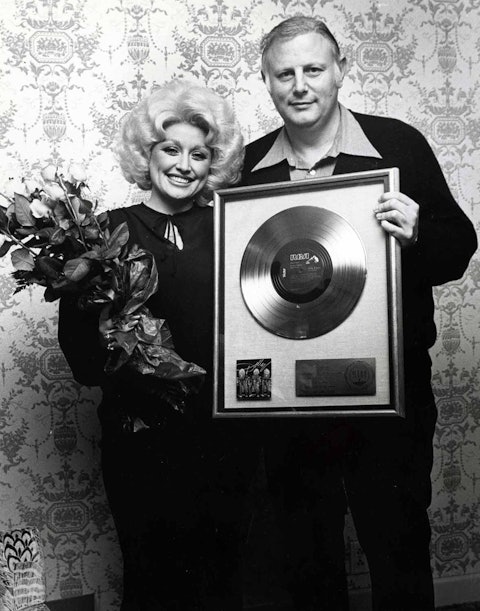
Dolly Parton and Jerry Bradley holding her platinum record award, for sales of more than 1 million copies, for the album Here You Come Again, Parton’s first million seller.
-
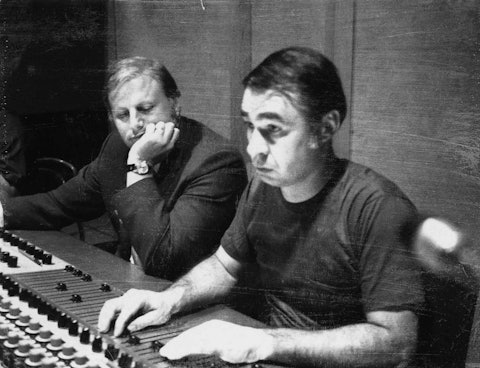
Jerry Bradley (left) with recording engineer Al Pachucki in the control room of RCA Studio B.
-
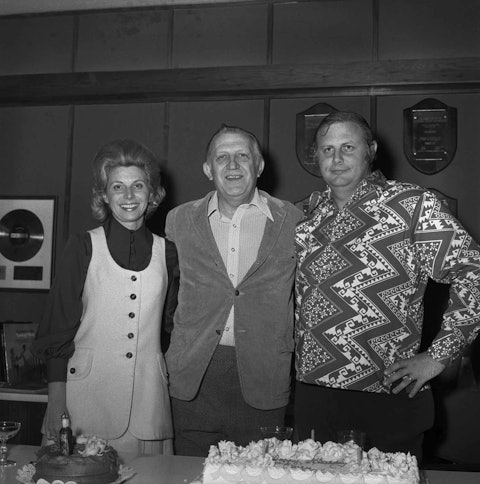
Music Row patriarch Owen Bradley (center) with his children Patsy Bradley, a BMI executive, and Jerry Bradley, RCA Records executive, October 1971.
Taking a Leading Role at RCA Records
Jerry Bradley did just that. In 1970, he told Atkins he would like to join the RCA staff, and after about a month, Atkins hired him as his assistant. In addition to handling paperwork and communicating with the label’s New York headquarters—neither of which Atkins liked to do—Bradley helped Atkins in the studio, scheduled sessions for various staff producers, and produced artists himself. When a bout with cancer led Atkins to cut back on producing and focus on his own recordings, Bradley succeeded him as head of RCA Records in Nashville in 1973.
Over the next nine years, Bradley signed several best-selling acts to the label. Realizing that country disc jockeys were moving away from older, hard-country artists such as Hank Snow, he spread the word that he was looking for a group with a more progressive sound. As it happened, an exciting, family-based act from Fort Payne, Alabama, came to his attention, and he eagerly signed the band Alabama to an RCA contract.
With Harold Shedd producing, the self-contained group recorded eight chart-topping country singles between 1980 and 1982, including “Tennessee River,” “Feels So Right,” and “Mountain Music.” Each year from 1980 through 1993, the band placed at least one single at #1 on the country charts, while recording many platinum or multi-platinum albums. In 1973, Bradley had secured permission from RCA New York to let the Nashville branch control its own album covers, and he helped design the artwork for the group’s first RCA collection, My Home’s in Alabama, which featured the outline of the state and the name Alabama spelled with a capital “A” at each end.
Bradley signed Ronnie Milsap, who eventually recorded thirty-five #1 singles for RCA. He produced many sessions with Milsap, sometimes co-producing with Nashville publisher Tom Collins. Bradley oversaw the recording careers of Dolly Parton, as it flourished after 1974, and RCA powerhouse Charley Pride, who recorded hits such as “Someone Loves You Honey,” “Burgers and Fries,” and “Where Do I Put Her Memory” under Bradley’s supervision.
Early on, Bradley discovered that he and Atkins differed in their opinions of which takes of a given song sounded best, and soon decided to trust his own instincts. “I wasn’t so much a musical leader,” Bradley said. “I was more of a coach.” Like many successful producers, he learned a great deal from studio musicians, and followed the Atkins maxim that “the musicians in this town will cut you a hit if you don’t get in their way too much.” Besides, sales figures proved that Bradley was more than “doing all right,” as he put it. With strong support from RCA Nashville promotion and marketing executive Joe Galante, Bradley and his team consistently made RCA a leading seller among labels with a Nashville presence.
It was Jerry Bradley who figured out how to brand the new, progressive country with the name Outlaws.
Launching the Outlaws
As a Nashville label head, Bradley is perhaps best remembered for his prominent role in creating the landmark 1976 album Wanted! The Outlaws, featuring Jessi Jessi Colter, Tompall Glaser, Waylon Jennings, and Willie Nelson. Nashville publicist Hazel Smith had been the first to describe Jennings’s recordings as Outlaw music, but it was Bradley who figured out how to brand the new, progressive country with the name Outlaw. Although Nelson had moved on to Columbia Records by the 1970s, Jennings was still on RCA, and there were various Nelson recordings in RCA’s vaults, along with material by Colter. Nelson overdubbed vocals on two earlier Jennings performances, while RCA leased tracks that Glaser had recorded for Polydor.
Bradley modeled the album cover after a vintage, Old West “wanted” poster, featuring all four singers’ faces. He further appealed to a young, rock-oriented audience by commissioning liner notes from Rolling Stone editor Chet Flippo. These marketing techniques helped the project become the first million-selling country album certified by the Recording Industry Association of America.
After leaving RCA, Bradley ran the Opryland Music Group of music publishing companies (including Acuff-Rose Publications) from 1986 to 2002, signing new songwriters and increasing income from commercials and film scores. He retired in 2003 when Sony bought those music catalogs.
—Peter Cooper

